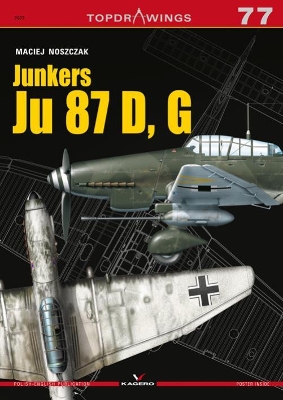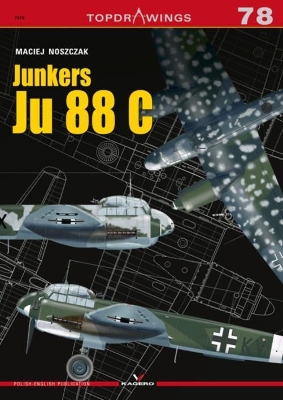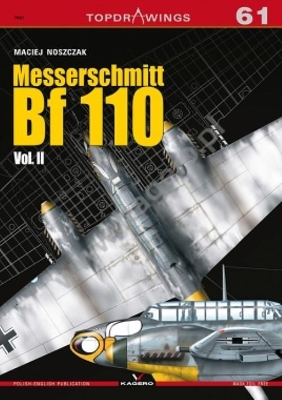TopDrawings
3 total works
Ju 87 D (Dora) is another version of this popular dive bomber. Despite the weak armor and less sufficient performance, the Stukas were still produced due to the lack of a successor. However, the plane underwent some modifications that allowed it to be used for a variety of tasks.
...Read more
...Read more
Ju 87 D (Dora) is another version of this popular dive bomber. Despite the weak armor and less sufficient performance, the Stukas were still produced due to the lack of a successor. However, the plane underwent some modifications that allowed it to be used for a variety of tasks.
Ju 87 D had a more efficient water and oil cooling system, a more aerodynamic fuselage and modified crew cabin that was more spacious and better thought out. Dora was driven by one of the two Junkers’ engines: Jumo 211 J-1 with 1420 hp or Jumo 211 P with 1500 hp. Fuel tanks were increased up to the capacity of 1370 l, which allowed to achieve an average flight length of 2 hours and 15 minutes. In the case of using external drop-tanks, the flight time increased to 4 hours.
In relation to the Ju 87 B version D could carry much bigger load of bombs. It was a jump from 500 to about 1200 kg of bombs, and with minimum amount of fuel and for short-distance missions, the aircraft could carry up as much as 1800 kg of bombs.
Individual variants – from D-1 to D-4 – differed in the used armor and equipment: D-2 – was planned for tropical operations, D-3 – was planned for night (D-3 N) or tropical missions (D-3/trop), D-4 – torpedo-bomber version.
Ju 87 D had a more efficient water and oil cooling system, a more aerodynamic fuselage and modified crew cabin that was more spacious and better thought out. Dora was driven by one of the two Junkers’ engines: Jumo 211 J-1 with 1420 hp or Jumo 211 P with 1500 hp. Fuel tanks were increased up to the capacity of 1370 l, which allowed to achieve an average flight length of 2 hours and 15 minutes. In the case of using external drop-tanks, the flight time increased to 4 hours.
In relation to the Ju 87 B version D could carry much bigger load of bombs. It was a jump from 500 to about 1200 kg of bombs, and with minimum amount of fuel and for short-distance missions, the aircraft could carry up as much as 1800 kg of bombs.
Individual variants – from D-1 to D-4 – differed in the used armor and equipment: D-2 – was planned for tropical operations, D-3 – was planned for night (D-3 N) or tropical missions (D-3/trop), D-4 – torpedo-bomber version.
Junkers Ju 88 was one of the most universal aircrafts taking part in the Second World War. It was designed as a fast bomber and it worked perfectly well in this role, especially during low-level airstrikes and shallow diving attacks. It could also be the night fighter, torpedo bomber...Read more
Junkers Ju 88 was one of the most universal aircrafts taking part in the Second World War. It was designed as a fast bomber and it worked perfectly well in this role, especially during low-level airstrikes and shallow diving attacks. It could also be the night fighter, torpedo bomber and reconnaissance aircraft.
The heavy fighter and fighter-bomber version of the Ju 88 was marked as variant C. The aircraft was designed to have strong offensive armament and be able to carry a certain bomb load, as in version A. The Ju 88 C had a solid nose which was adapted for the installation of machine guns and cannons. Usually the weaponry consisted of one MG FF cal. 20 mm cannon and three MG 17 machine guns cal. 7.92 mm. The characteristic gondola under the nasal section of the fuselage was originally kept, but in some units it was dismounted to reduce the airframe’s weight and air resistance, thus increasing the aircraft’s performance. Eventually the Ju 88 C evolved to the night fighter and gained the most popularity in this role.
The heavy fighter and fighter-bomber version of the Ju 88 was marked as variant C. The aircraft was designed to have strong offensive armament and be able to carry a certain bomb load, as in version A. The Ju 88 C had a solid nose which was adapted for the installation of machine guns and cannons. Usually the weaponry consisted of one MG FF cal. 20 mm cannon and three MG 17 machine guns cal. 7.92 mm. The characteristic gondola under the nasal section of the fuselage was originally kept, but in some units it was dismounted to reduce the airframe’s weight and air resistance, thus increasing the aircraft’s performance. Eventually the Ju 88 C evolved to the night fighter and gained the most popularity in this role.
The Messerschmitt Bf 110 was a typical working horse of the German Luftwaffe. It was used for a variety of tasks, although it was designed strictly as a heavy fighter (in this role, however, did not meet all the hopes placed in it). Dozens of developed versions of this...Read more
The Messerschmitt Bf 110 was a typical working horse of the German Luftwaffe. It was used for a variety of tasks, although it was designed strictly as a heavy fighter (in this role, however, did not meet all the hopes placed in it). Dozens of developed versions of this aircraft prove that it was a successful and flexible construction when it comes to the used armament, propulsion and equipment.


